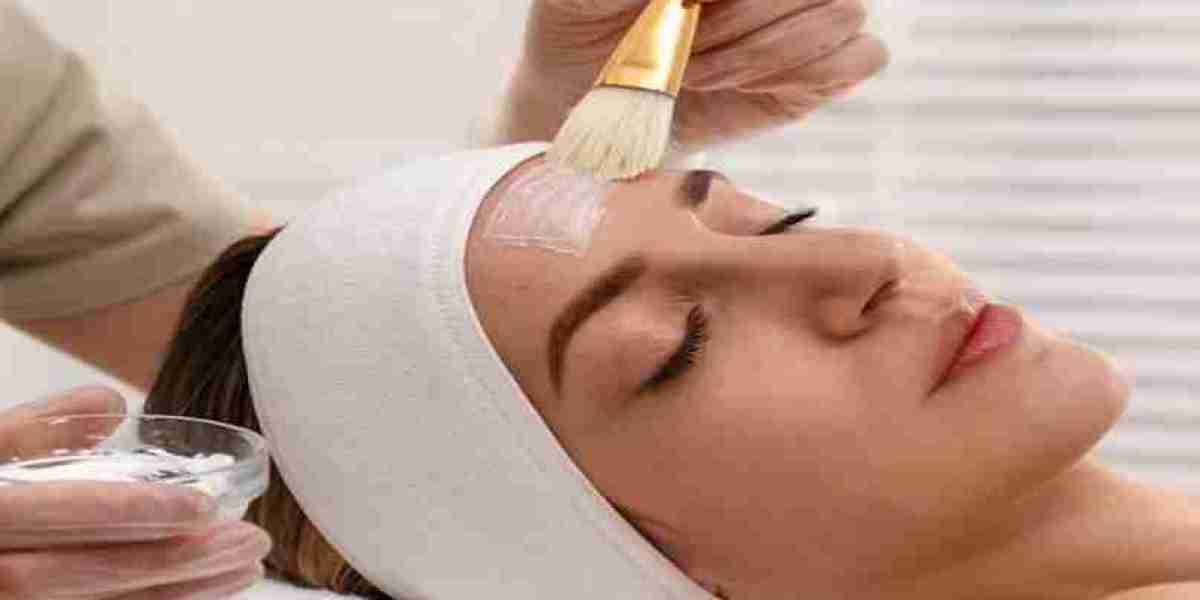A chemical peel is a popular skin treatment that removes dead skin cells, improves texture, and enhances skin tone. However, after the procedure, your skin becomes more sensitive to sunlight, making sun protection essential. Failing to protect your skin can lead to hyperpigmentation, irritation, and delayed healing. That’s why choosing the right sunscreen is crucial after undergoing Chemical Peeling in Islamabad.
Why Is Sunscreen Important After a Chemical Peel?
After a chemical peel, the top layer of your skin is removed, exposing fresh skin cells that are highly vulnerable to UV rays. Without protection, you risk:
✔ Hyperpigmentation – Dark spots may develop due to excessive sun exposure.
✔ Sunburn and redness – The skin’s natural barrier is compromised, making it more prone to burns.
✔ Slower healing – UV damage can delay skin recovery and cause irritation.
✔ Breakdown of results – Sun exposure can counteract the benefits of the peel, leading to uneven skin tone.
Using a high-quality sunscreen ensures that your skin heals smoothly and evenly, maximizing the results of your treatment.
What to Look for in a Sunscreen After a Chemical Peel
Not all sunscreens are safe for post-peel skin. You need a gentle yet effective formula that provides broad-spectrum protection. Here’s what to look for:
✅ 1. Broad-Spectrum Protection (UVA + UVB)
Ensure your sunscreen protects against both UVA and UVB rays. UVA rays cause premature aging and hyperpigmentation, while UVB rays lead to sunburns.
✅ 2. SPF 30 or Higher
After a chemical peel, your skin needs at least SPF 30, but SPF 50 is ideal for maximum protection. Reapply every two hours for continuous coverage.
✅ 3. Physical (Mineral) Sunscreen Over Chemical Sunscreen
Physical sunscreens contain zinc oxide and titanium dioxide, which form a protective barrier on the skin. They are gentler and less irritating than chemical sunscreens, making them ideal for sensitive post-peel skin.
✅ 4. Fragrance-Free and Non-Comedogenic
Avoid sunscreens with fragrances, alcohol, or harsh chemicals, as they can irritate freshly treated skin. Look for non-comedogenic formulas to prevent clogged pores.
✅ 5. Hydrating Ingredients
Since your skin will be dry and sensitive, choose sunscreens with:
✔ Hyaluronic acid – Keeps skin hydrated.
✔ Aloe vera – Soothes redness and irritation.
✔ Niacinamide – Helps reduce inflammation and strengthens the skin barrier.
Top Recommended Sunscreens for Post-Chemical Peel Care
Based on expert recommendations, here are some of the best sunscreens for protecting your skin after a chemical peel:
1. EltaMD UV Clear Broad-Spectrum SPF 46
✔ Contains zinc oxide for mineral protection.
✔ Includes niacinamide, which helps with redness.
✔ Fragrance-free and lightweight, ideal for sensitive skin.
2. La Roche-Posay Anthelios Mineral SPF 50
✔ 100% mineral sunscreen with zinc oxide and titanium dioxide.
✔ Non-greasy and fast-absorbing formula.
✔ Gentle enough for sensitive, post-procedure skin.
3. CeraVe Hydrating Mineral Sunscreen SPF 30
✔ Formulated with ceramides and niacinamide to restore the skin barrier.
✔ Non-irritating and fragrance-free.
✔ Provides hydration while protecting from UV rays.
4. ISDIN Eryfotona Actinica SPF 50+
✔ Lightweight and fast-absorbing formula.
✔ Contains DNA repair enzymes to aid skin recovery.
✔ Offers broad-spectrum UVA and UVB protection.
5. Neutrogena Sheer Zinc Oxide Dry-Touch SPF 50
✔ Hypoallergenic and free from harsh chemicals.
✔ Made with pure zinc oxide for mineral sun protection.
✔ Non-greasy and oil-free, perfect for all skin types.
How to Properly Apply Sunscreen After a Chemical Peel
Applying sunscreen correctly maximizes protection and prevents irritation. Follow these steps for the best results:
Step 1: Wait Until Your Skin Has Calmed
After your chemical peel, your skin will feel tender and sensitive. Avoid applying sunscreen on the first day if your skin is extremely raw. Instead, wear a hat and stay indoors.
Step 2: Use a Generous Amount
Use a nickel-sized amount of sunscreen for your face and more for your neck and chest. Apply gently without rubbing to avoid irritation.
Step 3: Reapply Every Two Hours
Since sunscreen can wear off, especially if you sweat or touch your face, reapply every two hours. If you are indoors, reapply at least twice a day.
Step 4: Avoid Makeup for the First Few Days
It’s best to skip makeup for a few days to allow the skin to breathe. Once you resume, opt for mineral-based makeup that includes SPF.
Step 5: Use Protective Clothing
Wearing a hat, sunglasses, and long sleeves offers additional protection when stepping outside. Even minimal sun exposure can cause hyperpigmentation after a chemical peel.
Common Sunscreen Mistakes to Avoid
? Skipping sunscreen indoors – UV rays penetrate windows, so sunscreen is necessary even when staying inside.
? Not reapplying frequently – One-time application isn’t enough; reapply every two hours.
? Using a chemical sunscreen – These can be irritating to sensitive, post-peel skin.
? Applying sunscreen too soon after a peel – If the skin is still raw, wait at least 24 hours before using sunscreen.
? Choosing a sunscreen with alcohol or fragrance – These can irritate and delay healing.
Final Thoughts
Using the right sunscreen after a chemical peel is essential to prevent hyperpigmentation, sunburn, and irritation. Mineral-based sunscreens with SPF 30–50, broad-spectrum protection, and soothing ingredients are the best options for post-peel skin. Additionally, proper application and frequent reapplication will ensure your skin heals beautifully and maintains its glow.
For expert chemical peeling treatments and personalized skincare advice, visit Dynamic Clinic. Their professional team ensures safe procedures and aftercare guidance for the best results.







